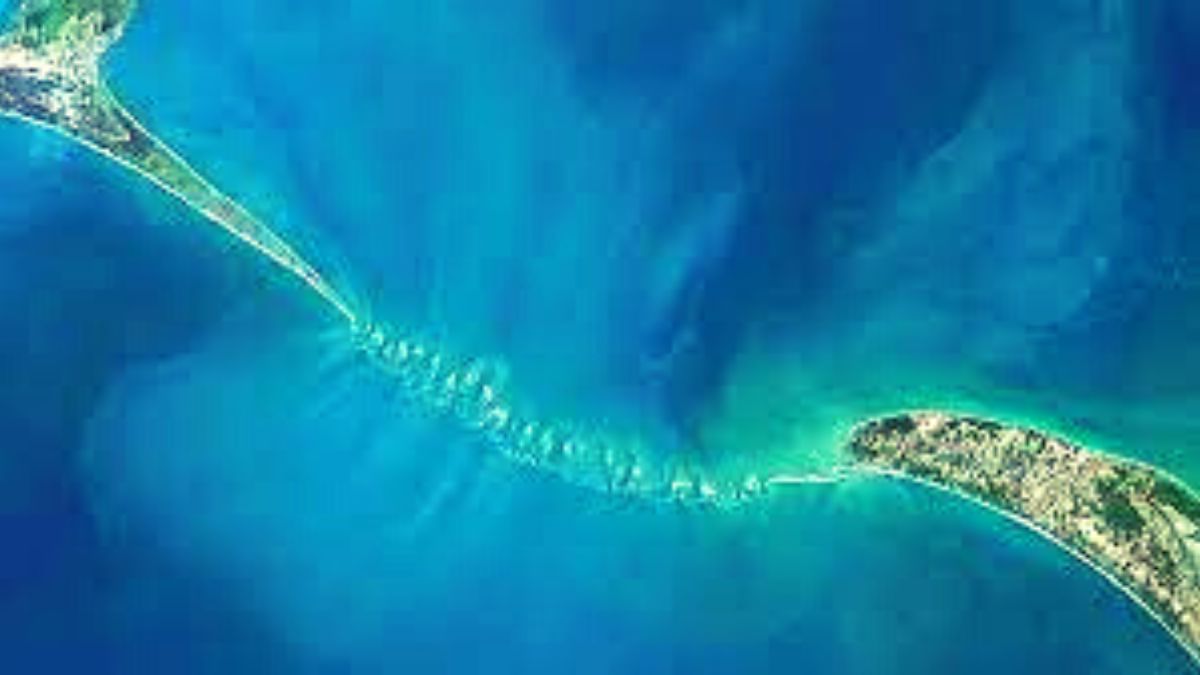Ram Setu Bridge Man-Made Or Natural
Ram Setu Bridge Man-Made Or Natural.

Talk about Indian mythology or Indian history and you will see the buzz around the famous Ram Setu bridge. The bridge is the shoal chain between India and Sri Lanka, and there has been a debate over whether the Ram Setu or AdamŌĆÖs bridge is man-made or natural.
Before jumping to the question, letŌĆÖs first get acquainted with the Ram Setu bridge a little more.
The Ram Setu Or The AdamŌĆÖs Bridge
The Ram Setu Or The AdamŌĆÖs Bridge is actually a chain of limestone shoals between Rameshwaram, India, and Mannar Island, Sri Lanka. The length of the limestone bridge is 48 km.
How Old Is The Ram Setu Bridge?
In a study titled ŌĆśProject RameswaramŌĆØ, the Geological Survey of India stated that between 7,000 and 18,000 years ago, the islands of Rameswaram, India, and Talaimannar, Sri Lanka were exposed. If we include the dating or corals, it can be said that the AdamŌĆÖs Bridge or the Ram Setu was formed around 500-600 years ago.
Why Is The Ram Setu Bridge Called “Adam’s Bridge?”
The famous Ram Setu bridge is called AdamŌĆÖs Bridge for a specific reason, per a few early Islamic sources. According to the sources, there is a mountain in Sri Lanka known as Adam’s Peak. Supposedly, this is the region where biblical Adam first appeared on the planet. After the expulsion from the Garden of Eden, Adam crossed from Sri Lanka to India through this bridge. This led to the name, ŌĆ£AdamŌĆÖs BridgeŌĆØ.
Mythological Significance Of The Ram Setu Bridge
ValmikiŌĆÖs Ramayana, a Hindu epic, first mentioned the famous Ram Setu bridge. It is mythologically believed to be constructed by Lord RamaŌĆÖs Vanara Sena (an army of monkeys). Nala, a vanara from the sena, is considered the chief engineer behind the bridge who instructed other members of the sena to build the bridge. The bridge was constructed to help Lord Ram reach Lanka in order to rescue his wife Sita from Raavana.
According to the mythological legend, floating stones were used to build the bridge. The name of Lord Rama was engraved on all the stones while making the bridge, and this made the bridge unsinkable. Moreover, Lord Rama prayed to the ocean surrounding the bridge for a path to Lanka.
The Big Question- Is Ram-Setu Bridge Man-Made?
Despite the strong belief of most of the Indian population on the mythological significance of the bridge, there is no scientific proof stating that the bridge is man-made. Up to the 15th century, the bridge was reportedly passable on foot. As per the temple records, the bridge was entirely above sea level till 1480. However, natural calamities entirely immersed the bridge in the shallow sea.
Thus, it can be said that the Ram Setu or the AdamŌĆÖs Bridge is a bridge made of natural limestone shoals.
The GIS and remote sensing analyst at World Resources Institute, Raj Bhagat Palanichamy, tweeted regarding the formation of the Ram Setu bridge and disregarding the notion that it is man-made.


